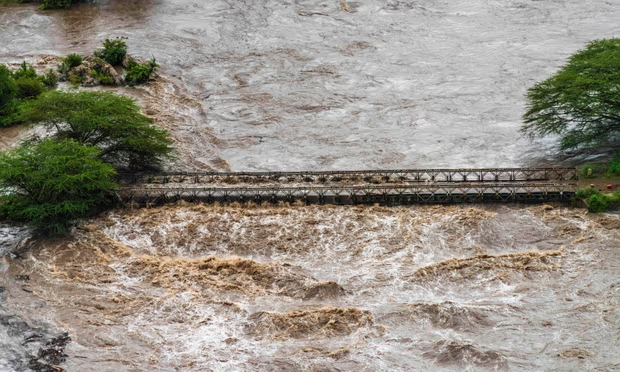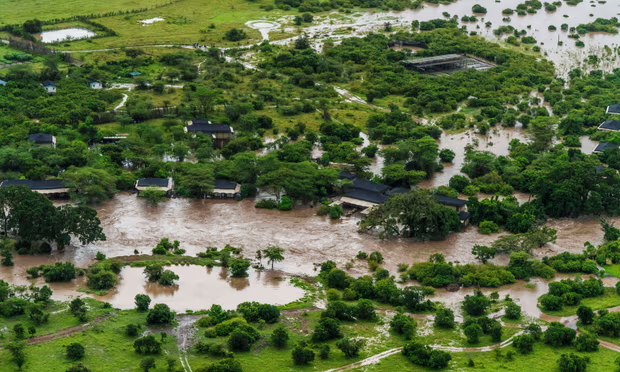Breaking the Banks: Catastrophe at the Maasai Mara
In the lush expanse of the Maasai Mara, nature’s fury has reclaimed the foreground. Recently, torrential rains have wrought havoc across Kenya, transforming serene retreats into scenes of urgency. At the heart of this tempest, over 90 tourists found themselves rescued from the very jaws of disaster, as the iconic Maasai Mara reserve turned into a vast inundated plain.
The Maasai Mara, a name synonymous with the great wildebeest migration, saw more than a dozen of its luxurious lodges and camps swallowed by floodwaters after persistent heavy rains forced a local river to burst its banks. On a fateful Wednesday morning, what was intended to be a haven for wildlife enthusiasts became a perilous water world.

The Kenya Red Cross spearheaded the rescue operations, proving once again to be an indispensable force in times of crisis. The logistical prowess of the Narok county government shone through as they deployed helicopters, ensuring the safe evacuation of stranded tourists from the now submerged accommodations. This action highlighted a swift and decisive response to an overwhelming natural disaster.
However, the flooding is not confined to the Maasai Mara. Across Kenya, a grim tally rises—more than 170 lives lost since mid-March with the onset of the rainy season. The destruction spans flooded urban arteries, collapsed infrastructures, and landslides that have buried hopes and homes alike. In Nairobi, the capital itself hasn’t been spared, with main roads temporarily transformed into rivers, forcing closures and rescues in residential areas like Kitengela.

The narrative darkens in the western part of Kenya, in Mai Mahiu, where a river ruthlessly claimed 48 lives after bursting through a tunnel blocked with debris. The aftermath left over 80 individuals missing, a chilling reminder of the river’s merciless surge. President William Ruto, recognizing the scale of the calamity, has called in military forces to bolster ongoing search and rescue operations.
Yet, locals voice concerns over the sluggish pace of these efforts, hindered by inadequate equipment and perhaps, a measure of unpreparedness.
Amidst this chaos, a pressing directive has been issued by the government, urging those in flood-prone zones to evacuate. The stakes are monumental, as water levels in two key hydroelectric dams have surged to historic heights, threatening further upheaval.
This string of events paints a grim picture of the challenges posed by climate change and extreme weather patterns. It’s a stark reminder of the vulnerability of even the most idyllic settings and the resilience required to withstand and recover from such natural calamities. For now, the Maasai Mara and other affected areas face a recovery that will require not just immediate relief but long-term strategies to mitigate such disasters in the future.
